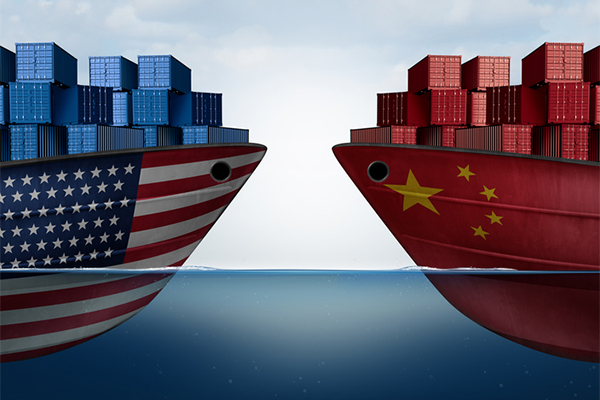project44 data points to heavy congestion at Chinese ports
While much attention has been paid to the backlog of container ships waiting to berth at the Port of Los Angeles and the Port of Long Beach (there were 73 anchored there in September), the United States West Coast is far from the only place dealing with these challenges.
That was made clear in data published today by Chicago-based project44, a technology services provider offering standardized, secure Web service API (application programming interfaces) integrations enabling 3PLs and shippers to connect with carriers in real time, which found that as of October 7, there were “around 386 ships (anchored and moored) off Shanghai and Ningbo—two of China’s busiest ports, of which, 228, were cargo and container vessels.”
The company noted that these numbers are reflective of various industry themes, including further product shortages and delays for businesses and consumers, coupled with holiday sales, as well as a global post-pandemic recovery. What’s more, the number of vessels anchored and moored off of these Chinese ports becomes even more heightened, when taking into account that containerized trade through Chinese ports represents 40% of global container trade—Shanghai is the world’s busiest container port, with Ningbo coming in third.
As for the underlying factors contributing to these port issues, project44 cited various factors, including:
- lingering backlogs from the pandemic-related closure of Ningbo port;
- the impact of Typhoon Chantu and the “golden week” between October 1 and October 7; and
- still-high container rollover rates, a sign that Chinese ports “are not making significant headway in dealing with excess cargo, with Ningbo’s container rollover rate at 36% in September and the ports of Hong Kong and Shanghai at 41% and 37%, respectively
Another major issue compounding this situation is the power-shortage crisis in China, with its federal government implementing what project44 called a strict rationing of electricity, which has led manufacturers to reduce output at a time when demand rises, adding that mandatory power limits and coal reserves shortages impacting global trade.
And container lead times, for vessels originating out of China are also being impacted, too, for various reasons, including: cargo rollovers related to vessel space capacity, overbooking, blank sailings, as well as additional costs being incurred related to port costs that factors into rising rates.
“The delays caused by cargo rollovers also affect production and delivery patterns at the destination ports, as customers who placed orders for raw materials for manufacturing or retail goods for consumers cannot get their goods in time,” said project44.
That is supported by project44 data, which showed that there was a nine-day gain in lead times from Yantian port to the U.S. West Coast, from 2019 to 2021, a 34.85% increase. And there was a nine-day gain in lead times, for the same period, from Shanghai, and 10 days from Qingdao, increasing 36.39% and 32.79%, respectively.
“The largest dwell time delays we are seeing is in transshipment,” Josh Brazil, project44, VP, Data Insights, told LM. “Sailing schedules are in turmoil and schedule reliability is taking a beating and so are transshipments delays and rollover rates. We are seeing 10+ delays at Chinese transshipment ports. If shippers can avoid transshipment routes, they will hedge against potential further delays. In the short term, we expect the situation will remain the same throughout the first quarter of 2022 following Chinese New Year in Feb. The energy crisis along with recent flooding in Shanxi Provence will continue to restrict manufacturing output amid sustained high demand in NA and EU.”
Brazil also noted in project44’s data that orders are currently reaching customers with a delay of at least 10 days compared to 2019 pre-pandemic delivery times, and he also noted that shippers need to ensure that they allow enough time for the goods to move from point A to point B and to ensure that cargo is cleared and delivered on time.













